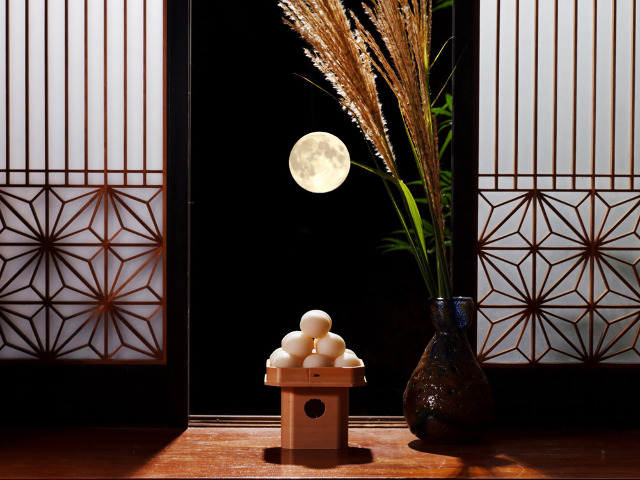In the ancient times, Japanese people enjoyed viewing a full moon, praying for good harvest for the year.
This full-moon-viewing tradition is called “Otukimi” in Japanese.
“O” is a prefix that is put on the head of a word to make it sound more polite in Japanese.
“Tsuki” means “moon.”
“Mi” is a short form of “miru,” which means “to view or see something.”
So “otsukimi” literally means “to view the moon,” especially “a full moon.”
This is one of our old customs, which is said to be originated from China.
Autumn can be the best season for full-moon viewing because the sky is clear at night.
It is said that ancient farmers were able to work late into the night with bright moonlight, when they needed to work long hours during their harvest seasons.
And they started admiring the moon, and placed offerings such as rice dumplings, pampas grass, and crops.
The tradition of full-moon viewing with some offerings, however, has been fading away and is getting simplified these days.
For example, many Japanese people now only eat rice dumplings or arrange flowers, without actually viewing the full moon.
But it may be nice to see a bright full moon for a change, isn’t it?
I feel like drinking some alcohol in the long autumn nights.
I guess it’s about time to drink home-made plum wine!

